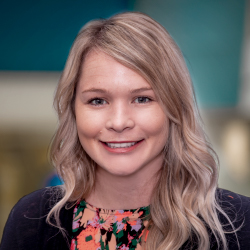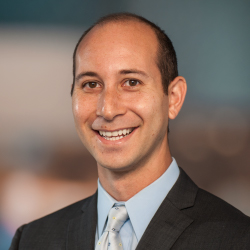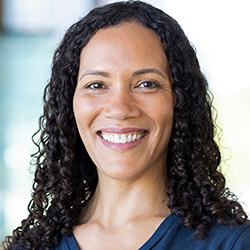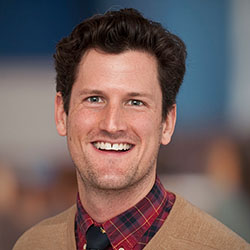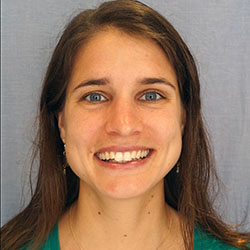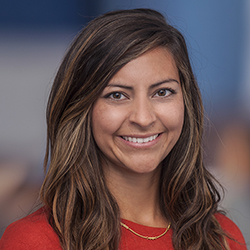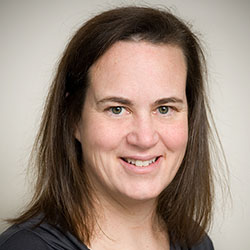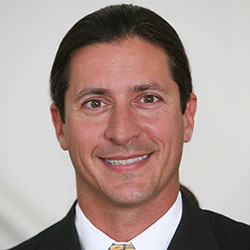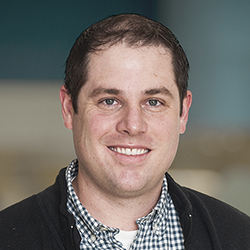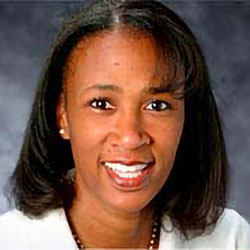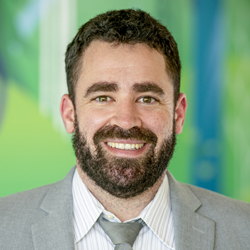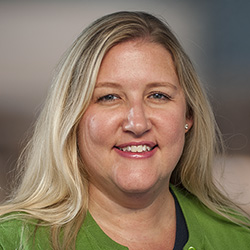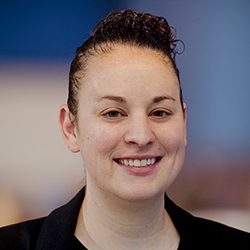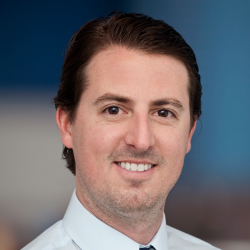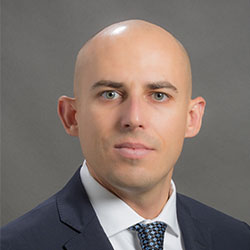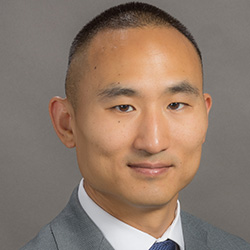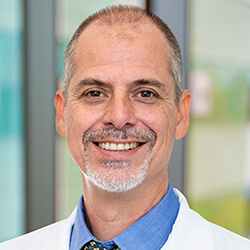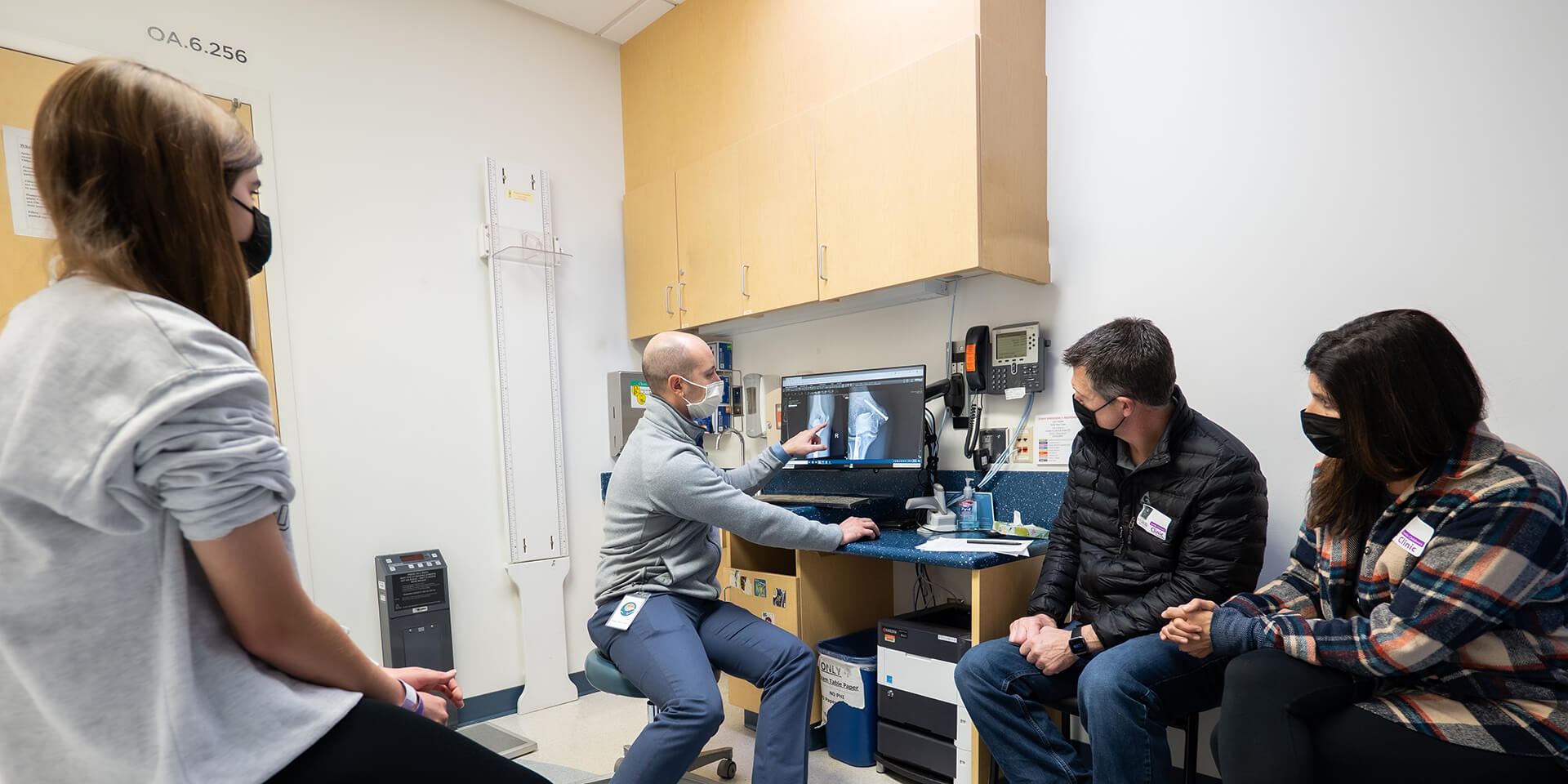
Fracture Program
Contact the Fracture Program
Injury Care From Experts in Children’s Growing Bodies
The team in Seattle Children’s Fracture Program is specially trained to diagnose and treat broken bones and other serious injuries, such as skin wounds or concussions, in children and teens. Injuries like these are not the same in young people as in adults because young people are often still growing. The care that kids need differs too. We are experts in understanding these differences. The first treatment your child receives for a fracture is the most important, so call us as soon as possible after their injury.
When is a fracture an emergency?
Call 911 or take your child to our Emergency Department if you think they may have broken a bone and the body part looks bent, curved or deformed. Other reasons to get emergency care for a fracture include:
- Blood flow to the area seems lower than normal. One sign of this is a change in skin color. Your child’s skin may look paler than usual. In those with light skin tone, the area may look white. In those with brown skin tone, it may look yellow-brown. In those with dark skin tone, it may look ashen or gray. Another sign of lower blood flow to an arm or leg is that the hands and fingers or feet and toes may feel cold to the touch compared to an area above the break.
- Not being able to put any weight at all on an injured leg, even to limp.
For fractures that aren’t an emergency, call your child’s doctor, Orthopedics and Sports Medicine at 206-987-2109 or an urgent care clinic.
Why choose Seattle Children’s Fracture Program?
- At Seattle Children’s, your child’s team includes , pediatric , , , nurses, , certified , registered and .
- We have the knowledge and experience to give your child expert fracture care, from a splint or cast, to complex surgery, to rehabilitation. Many of the children we treat are referred to us from other doctors and hospitals throughout the Pacific Northwest.
- We treat about 5,800 children and teens with fractures each year and see 20 fractures on our busiest days. Many kids we see were hurt in sports or other active play.
- Kids are still growing well into their teens. This means their bodies can be damaged in ways that an adult body can’t. At Seattle Children’s, we specialize in knowing which treatments are most likely to have the best results for kids whose bones are still growing.
- are a special concern. Damage to these parts of a bone can affect a young person’s growth permanently. The treatment we give your child will take their growth plates into account.
- Children’s fractures heal differently than adults’ fractures, too. Sometimes a child’s crooked fracture will straighten out as the child grows. This could mean your child needs only a cast, while an adult with a similar injury might need surgery.
- All the caregivers on our team have special training in the physical, emotional and social needs of young people.
- Seattle Children’s has the largest group of pediatric radiologists in the Northwest. We keep your child’s safety in mind at all times. If your child needs imaging that uses radiation, we use the lowest amount possible (PDF) to make the best image. We have a 3D low-dose radiation X-ray machine, called the EOS. It makes safer full-body 3D images.
- We can treat most fractures successfully without surgery, but your child might need surgery if the broken bone is at an angle and in a bad position for healing.
- Before we recommend surgery, we look at your child as a whole person. Your child’s team will take many factors into account. These include where their fracture is, how serious it is, whether their was injured and what results you can expect from treatment.
- We recommend surgery only when we believe it will give your child the best results. If your child needs surgery, our pediatric have many years of experience in treating children with fractures. Many have expanded fellowship training in areas like sports medicine, hip preservation, upper extremity surgery and foot and ankle conditions.
- Seattle Children’s Emergency Department and urgent care clinics see children with broken bones and other serious injuries.
- Our Orthopedics and Sports Medicine doctors also see patients with fractures and other injuries in clinic at Seattle Children’s locations in Seattle, Bellevue, Everett, Federal Way, Olympia, the Tri-Cities, Wenatchee, Yakima and Alaska.
- Children, teens and young adults who need surgery get expert care at our hospital campus in Seattle or in Bellevue.
- Having a child with a fracture can be stressful for the whole family. From the first visit to follow-up, our team will work to give your child seamless care and make your experience here as easy on you as we can.
- Your child’s team does more than plan and provide care for your child. We also make sure you and your child understand your child’s injury and treatment options. We support you in making choices that are right for your family.
- Seattle Children’s supports your family with a range of resources. Our Child Life specialists, Family Resource Center and Guest Services are here to help.
- Seattle Children’s pediatric are part of CORTICES, a national group of experts working together to promote care for children with fractures and other bone, muscle and joint conditions. CORTICES stands for Children’s Orthopedic Trauma and Infection Consortium for Evidence-Based Studies.
- Our surgeons have led research to reduce your child’s exposure to radiation from imaging tests, like and .
- As part of our constant work to improve results for kids, we developed standard plans (called protocols) to help your child recover after surgery.
- Learn more about current orthopedics research at Seattle Children’s.
Treatments and Services
Members of the Fracture Program team will carefully assess your child. Then we’ll talk with you about the options and recommend a treatment plan. We specialize in knowing which treatments are most likely to have the best results for kids. We work with providers from many areas of Seattle Children’s to give your child the care they need, from a splint or cast, to complex surgery, to rehabilitation.
Along with treating the injury, our team considers all your child’s and family’s needs. We help with a range of issues, including:
- Telling your child about their injury and treatment in a way they understand
- Dealing with day-to-day matters, such as how your child can use the toilet or ride in the car while they recover
- Helping your child feel better, physically and psychologically
- Coping if your child needs to stay home from school
- Meeting your child’s needs when they are ready to return to school
As your child gets better, we’ll see them to check their progress and watch for any problems that may develop. We’re experts not only in treating injuries when they happen but also in preventing and dealing with effects that can occur later. In our Fracture Program, your child will get seamless care, even as their needs change.
Learn more about fracture treatment.
Team
, , , , and certified from the Orthopedics and Sports Medicine team will treat your child’s fracture, injury to , joint injury or other trauma. Based on your child’s needs, they may also get care from others, such as , registered and .


